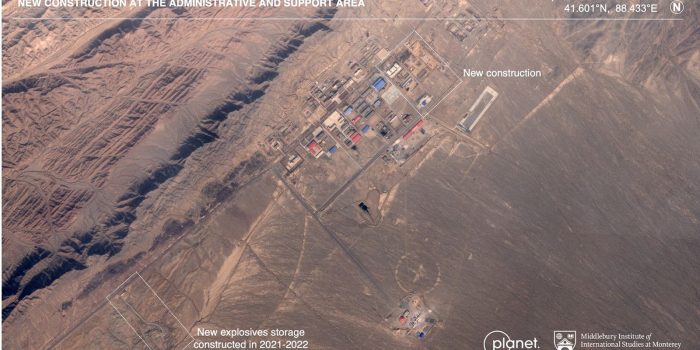The heightened activity seen in recent satellite images of nuclear test sites in the United States, Russia, and China raises concerns about a potential restart of nuclear testing by these countries. The Comprehensive Nuclear Test Ban Treaty, which forbids the explosion of nuclear weapons, is in force, but because it has not been ratified by all parties, testing is still possible.
The restoration of nuclear testing facilities in the United States is ascribed to a desire for assurance over the dependability and effectiveness of the country’s sizable nuclear arsenal. The United States has stopped testing since 1992, but it has continued to build up its arsenal by creating new weapon types including the W76-2 submarine-launched missile warhead and the B61-12 nuclear gravity bomb. These developments have been made without the use of nuclear weapons, underscoring their potential advantages.

Russia, with a significant nuclear arsenal inherited from the Soviet Union, maintains its capabilities and explores potential enhancements. The nation, historically reliant on nuclear weapons, uses military exercises and displays of strength to assert influence and deter perceived threats. Recent activities at Russian nuclear test sites may signal a readiness to test and potentially demonstrate the strength of their arsenal.
On the other hand, China would benefit greatly from a restart of nuclear testing. The nation has been progressively enhancing its nuclear arsenal by making investments in both cutting-edge delivery technologies and warhead research. Nuclear testing is a possible method of validation as China’s nuclear arsenal develops and the requirement for assurance over new warhead designs becomes evident.

The current situation presents a standoff, with each nation evaluating the risks and benefits of being the first to break the unofficial testing ban. While the stigma associated with resuming testing is a significant deterrent, the strategic advantages and advancements in nuclear capabilities drive the three major nuclear powers to consider the possibility. The second and third countries to test would likely face lesser international condemnation, setting the stage for a potential cascade of tests in the near future. The world watches with caution as these nuclear powers contemplate their next moves, emphasizing the importance of global non-proliferation efforts to maintain peace and stability.


